Related Research Articles

The West Australian is the only locally edited daily newspaper published in Perth, Western Australia. It is owned by Seven West Media (SWM), as is the state's other major newspaper, The Sunday Times. It is the second-oldest continuously produced newspaper in Australia, having been published since 1833. It tends to have conservative leanings, and has mostly supported the Liberal–National Party Coalition. It has Australia's largest share of market penetration of any newspaper in the country.

A British comic is a periodical published in the United Kingdom that contains comic strips. It is generally referred to as a comic or a comic magazine, and historically as a comic paper. As of 2014, the three longest-running comics of all time were all British.
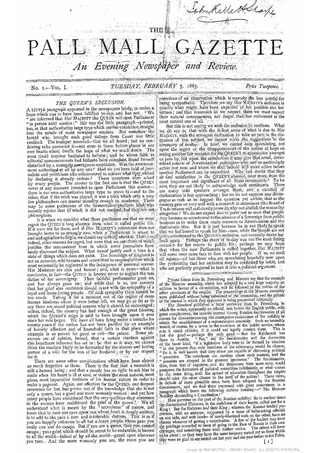
The Pall Mall Gazette was an evening newspaper founded in London on 7 February 1865 by George Murray Smith; its first editor was Frederick Greenwood. In 1921, The Globe merged into The Pall Mall Gazette, which itself was absorbed into The Evening Standard in 1923.
Notable events of 1938 in comics.
The Amalgamated Press (AP) was a British newspaper and magazine publishing company founded by journalist and entrepreneur Alfred Harmsworth (1865–1922) in 1901, gathering his many publishing ventures together under one banner. At one point the largest publishing company in the world, AP employed writers such as Arthur Mee, John Alexander Hammerton, Edwy Searles Brooks, and Charles Hamilton. Its subsidiary, the Educational Book Company, published The Harmsworth Self-Educator, The Children's Encyclopædia, and Harmsworth's Universal Encyclopaedia. The company's newspapers included the Daily Mail, the Daily Mirror, The Evening News, The Observer, and The Times. At its height, AP published over 70 magazines and operated three large printing works and paper mills in South London.
Notable events of 1937 in comics.
Notable events of 1936 in comics.
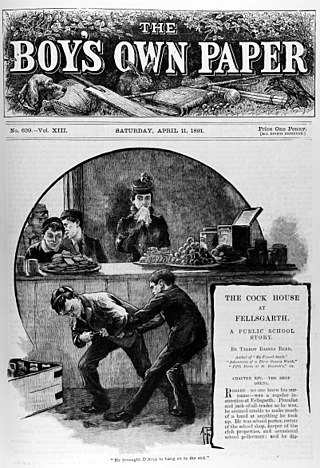
A story paper is a periodical publication similar to a literary magazine, but featuring illustrations and text stories, and aimed towards children and teenagers. Also known in Britain as "boys' weeklies", story papers were phenomenally popular before the outbreak of the Second World War.
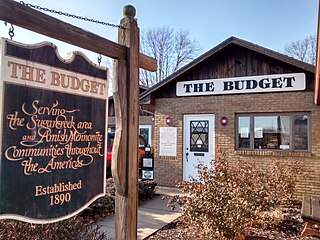
The Budget is a US weekly newspaper published in Ohio for and by members of various plain Anabaptist Christian communities including the Amish, Amish Mennonite, Beachy Amish, as well as plain Mennonite and Brethren communities. The Budget began publishing in 1890. The paper was known as The Weekly Budget up to the time the Royal Printing Company began publishing it in 1920.
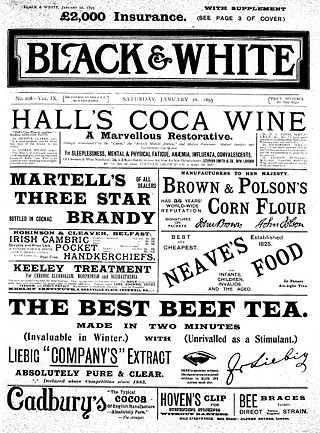
Black and White: A Weekly Illustrated Record and Review was a British Victorian-era illustrated weekly periodical founded in 1891 by Charles Norris Williamson. In 1912, it was incorporated with The Sphere.

Magazines intended for boys fall into one of three classifications. These are comics which tell the story by means of strip cartoons; story papers which have several short stories; and pulp magazines which have a single, but complete, novella in them. The latter were not for the younger child and were often detective or western in content and were generally greater in cost. Several titles were published monthly whereas the other two categories were more frequent.
Comic Cuts was a British comic magazine. It was published from 1890 to 1953, and was created by Alfred Harmsworth. In its early days, it inspired other publishers to produce rival comic magazines. Comic Cuts held the record for the most issues of a British weekly comic for 46 years, until The Dandy overtook it in 1999.

The Illustrated Sporting and Dramatic News was a British weekly magazine founded in 1874 and published in London. In 1945 it changed its name to the Sport and Country, and in 1957 to the Farm and Country, before closing in 1970.
Le Journal de Mickey is a weekly French comics magazine established in 1934, featuring Disney comics from France and around the world. The magazine is currently published by Unique Heritage Media. It is centered on the adventures of Mickey Mouse and other Disney characters but also contains other comics. Le Journal de Mickey is credited with "the birth of the modern bande dessinée". It is now the most popular French weekly magazine for children between 8 and 13 years old.
Young Folks was a weekly children's literary magazine published in the United Kingdom between 1871 and 1897. Its publishing office was initially in Manchester, then relocated to London in 1873. It is most notable for having first published a number of novels by Robert Louis Stevenson in serial form, including Treasure Island, Kidnapped, and The Black Arrow.
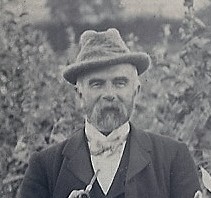
John Proctor was a British artist, cartoonist and illustrator, well known in his day for political cartoons in magazines such as Judy and Moonshine, rivals to Punch. He also illustrated many books and was one of Lewis Carroll's choices to illustrate Alice Through the Looking-Glass instead of John Tenniel.

James Henderson was a British newspaper and magazine proprietor and publisher, who was influential in developing the popular press and comics in Britain. He established James Henderson & Sons Ltd, which published many newspapers and magazines as well as books and postcards.
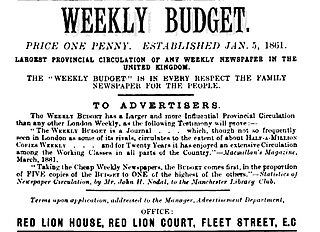
The Weekly Budget, originally the North British Weekly Budget, was a journal published in Britain between 1861 and 1910. It combined news with commentary, fictional stories, cartoons and puzzles. It was founded by James Henderson and published by his company, in later years James Henderson & Sons Ltd.
C. Arthur Pearson Ltd. was a British publisher of newspapers, periodicals, books, and comics that operated from 1890 to c. 1965. The company was founded by C. Arthur Pearson, later to be known as Sir Arthur Pearson, 1st Baronet.
References
- 1 2 3 Louis James, "Funny Folks", in Dictionary of Nineteenth-century Journalism in Great Britain and Ireland, Academia Press, 2009, p.238
- 1 2 3 Nicholas Hiley, "Comic Periodicals", Gale.com. Retrieved 22 November 2020
- ↑ John Adcock, "Funny Folks", Yesterday's Papers, 29 September 2009. Retrieved 22 November 2020